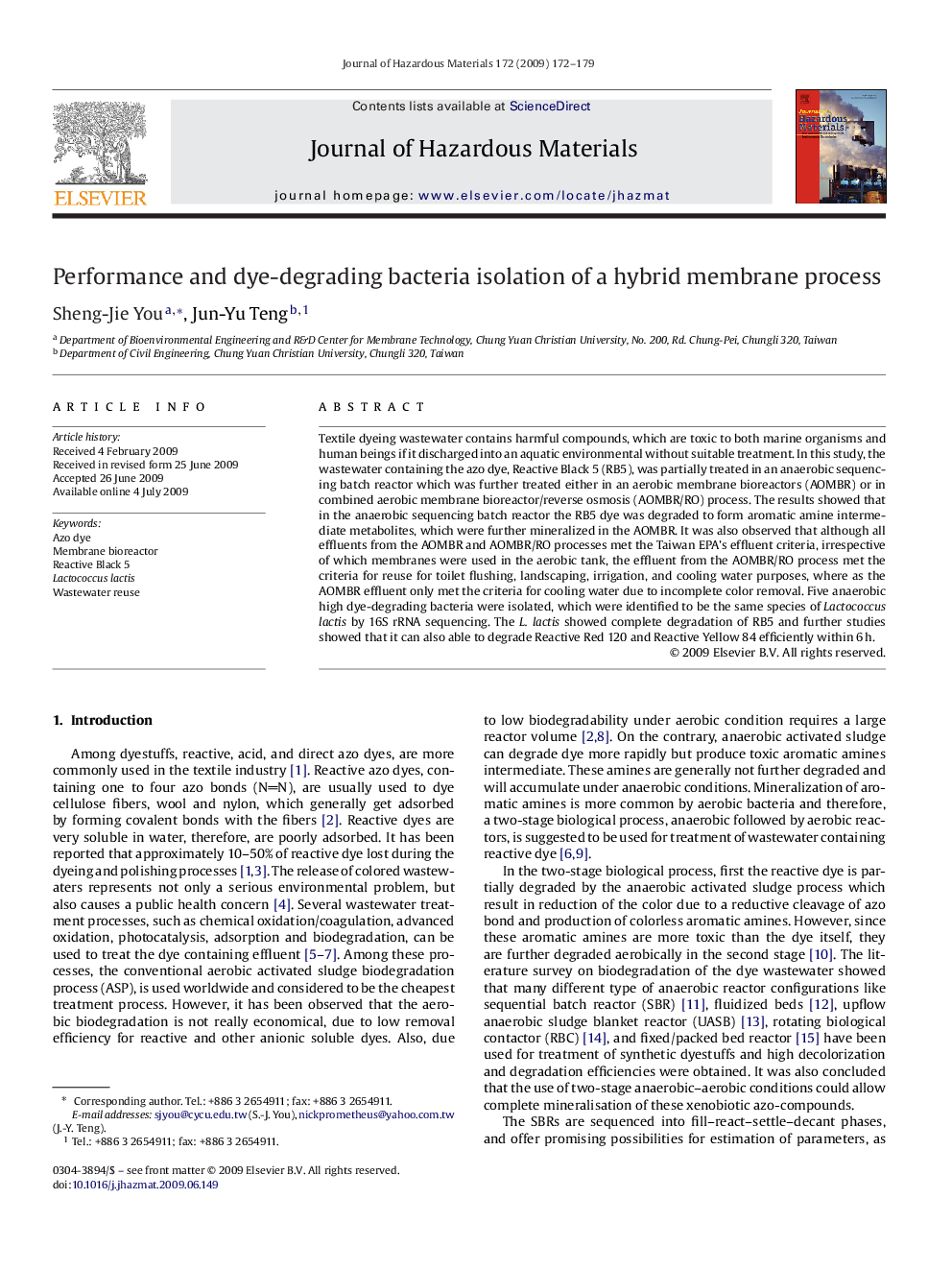| Article ID | Journal | Published Year | Pages | File Type |
|---|---|---|---|---|
| 581049 | Journal of Hazardous Materials | 2009 | 8 Pages |
Abstract
Textile dyeing wastewater contains harmful compounds, which are toxic to both marine organisms and human beings if it discharged into an aquatic environmental without suitable treatment. In this study, the wastewater containing the azo dye, Reactive Black 5 (RB5), was partially treated in an anaerobic sequencing batch reactor which was further treated either in an aerobic membrane bioreactors (AOMBR) or in combined aerobic membrane bioreactor/reverse osmosis (AOMBR/RO) process. The results showed that in the anaerobic sequencing batch reactor the RB5 dye was degraded to form aromatic amine intermediate metabolites, which were further mineralized in the AOMBR. It was also observed that although all effluents from the AOMBR and AOMBR/RO processes met the Taiwan EPA's effluent criteria, irrespective of which membranes were used in the aerobic tank, the effluent from the AOMBR/RO process met the criteria for reuse for toilet flushing, landscaping, irrigation, and cooling water purposes, where as the AOMBR effluent only met the criteria for cooling water due to incomplete color removal. Five anaerobic high dye-degrading bacteria were isolated, which were identified to be the same species of Lactococcus lactis by 16S rRNA sequencing. The L. lactis showed complete degradation of RB5 and further studies showed that it can also able to degrade Reactive Red 120 and Reactive Yellow 84 efficiently within 6Â h.
Related Topics
Physical Sciences and Engineering
Chemical Engineering
Chemical Health and Safety
Authors
Sheng-Jie You, Jun-Yu Teng,
